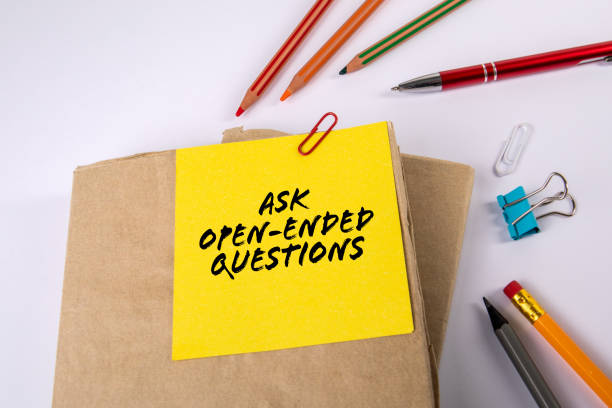A comprehensive guide on mastering open-ended questions for effective communication

Introduction
Open-ended questions are the unsung heroes of effective communication. They have the potential to turn casual chit-chat into a deep, meaningful conversation. Understanding their value can make you a better listener, researcher, educator, or therapist. Here’s why these questions matter so much.
Open-Ended Questions
The term “open-ended questions” might sound like jargon, but it’s pretty straightforward. These are questions that cannot be answered with a simple “yes” or “no.” They compel the respondent to think, reflect, and provide more comprehensive answers. For instance, instead of asking, “Did you enjoy your trip?”, you’d ask, “What did you enjoy most about your trip?” Their importance is evident in daily conversations, eliciting feelings, emotions, and detailed explanations. Furthermore, researchers cherish them because they provide richer data, helping in qualitative analysis.
Benefits
Open-ended questions pack quite a punch. They have the power to elicit detailed responses. Instead of getting a binary answer, you receive insights, feelings, and sometimes even stories. By gauging true feelings, you can understand the emotions, reasons, and motives behind an answer. Moreover, they encourage critical thinking. When faced with such a question, respondents need to ponder, evaluate, and then articulate their thoughts.
Types of Open-Ended Questions
There are various flavors to these questions. Reflective questions often mirror what the respondent says, urging them to delve deeper. Interpretive questions ask the respondent to explain or elaborate on a statement, while hypothetical questions present a situation and ask how the respondent would react or handle it.
Crafting the Perfect Question
Creating impactful open-ended questions is an art. First and foremost, avoid leading questions. Your question shouldn’t hint at what answer you expect or prefer. Secondly, be clear and concise. The more straightforward your question, the easier it is for the respondent to understand and answer. Lastly, use neutral language. Avoid loaded terms that might influence the response.
Usage in Different Fields
Open-ended questions aren’t restricted to personal conversations. They’re gold in education, helping students to think critically and express their understanding. In business, they can provide deeper insights into customer satisfaction and areas of improvement. And in therapy, they assist in understanding a patient’s feelings and experiences.
Comparing with Close-Ended
While open-ended questions have numerous benefits, they aren’t always the best choice. Close-ended questions, which typically yield “yes” or “no” answers, have their own advantages. They are quicker, easier to analyze, and sometimes all that’s needed. The trick is to know when to use each type.
Techniques to Encourage Answers
Sometimes, respondents might hesitate to answer. During such times, being patient can work wonders. Give them the time to think and formulate their answer. Active listening shows you’re genuinely interested, encouraging them to share more. And often, your non-verbal encouragement, like nodding, can prompt them to continue.
Common Mistakes
Like all things, there are pitfalls to avoid. Being too vague can confuse respondents. Overloading the question with multiple queries can be overwhelming, and if your question isn’t truly open-ended, it defeats the purpose.

FAQs
- What’s the primary difference between open-ended and closed-ended questions?
Open-ended questions require detailed responses, while close-ended ones typically yield short, often binary, answers.
- Why are open-ended questions valuable in research?
They provide richer data, giving insights into emotions, thoughts, and motivations.
- Can open-ended questions be used in surveys?
Absolutely! They’re often used to get qualitative feedback.
- Are they time-consuming?
They can be, as they require thoughtful responses. However, the depth of information they provide often justifies the time spent.
- Is it okay to use both types of questions in a conversation?
Definitely! Both types have their merits. It’s all about using the right tool for the job.
- Can open-ended questions be leading?
Yes, if not framed correctly. It’s essential to be neutral and unbiased.
Conclusion
The power of open-ended questions cannot be overstated. Whether you’re an educator trying to gauge understanding, a therapist understanding feelings, or just someone looking for a deep conversation, these questions are your best bet. They elicit feelings, encourage critical thinking, and provide a richness that close-ended questions can’t match. So the next time you’re in a conversation, try weaving in a few open-ended questions and see the magic unfold!
External Links/ Sources:
